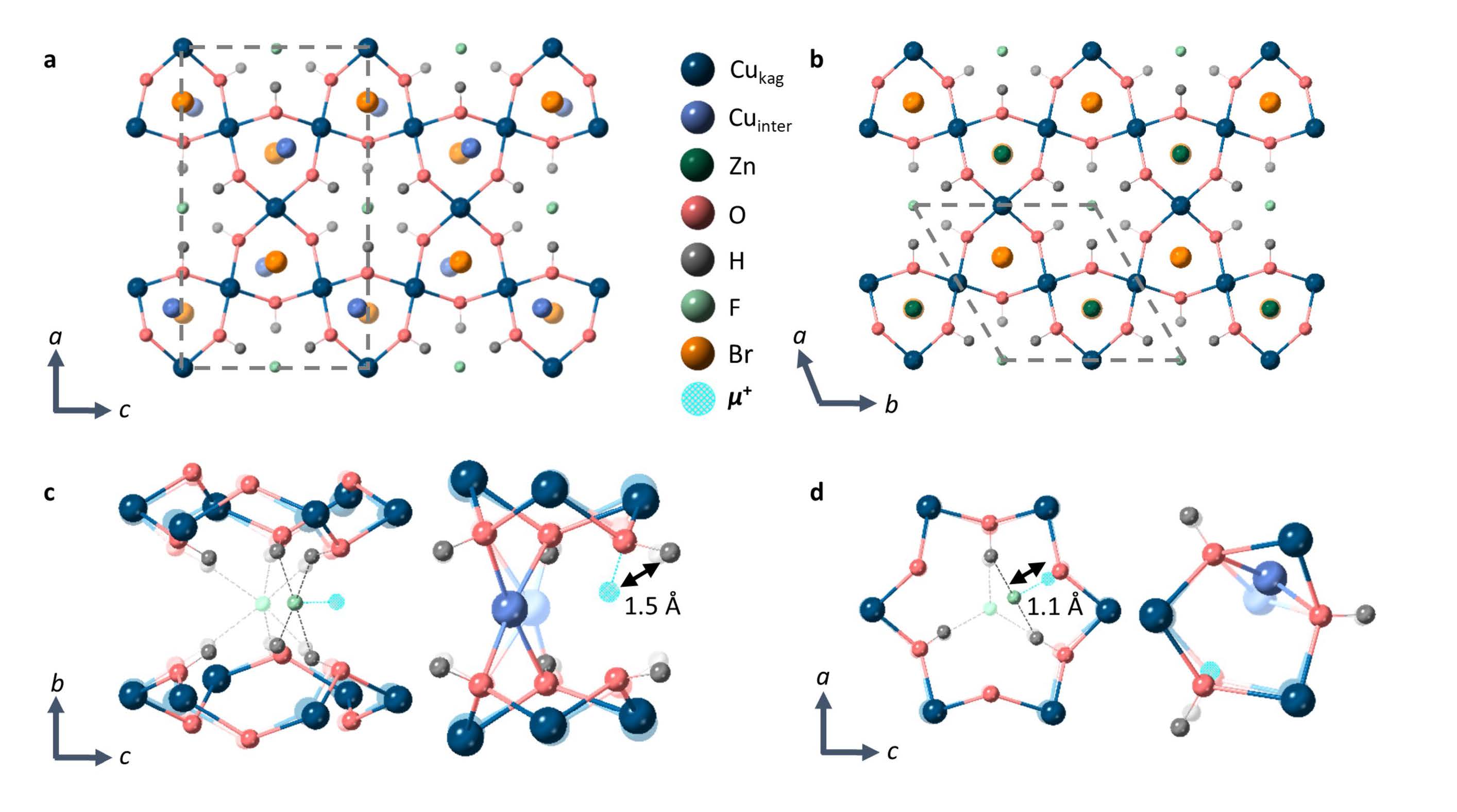Quantum spin liquids (QSLs) occur when the magnetic moments of a material act like a liquid and remain disordered even at absolute zero. Their highly entangled nature should give rise to exotic physical phenomena that could have applications in data storage and memory, and developments in QSLs may also help in the understanding of high temperature superconductivity.
The theoretical consensus is that the arrangement of magnetic atoms in triangular planes, known as a kagome network, with magnetic interactions that are frustrated by this arrangement, is a likely candidate for a QSL. However, the true nature of such a state is yet to be described.
In the current study, published in npj Quantum Materials, a group of researchers led by Dr Lucy Clark from the University of Birmingham have used muon spin relaxation and rotation (MuSR), alongside theoretical calculations, to characterise the magnetic properties of Zn-barlowite.
Zn-barlowite is zinc-doped Cu4(OH)6FBr, a naturally occurring mineral. In barlowite, the Cu2+ ions are arranged in kagome layers, as predicted by theory to be the starting point for a QSL. The addition of zinc ions in between these layers, as done in this study, could trigger the formation of QSL state. The low-temperature structures of barlowite and Zn-barlowite are shown below.

In MuSR experiments, positively-charged spin-polarised muons were implanted into the sample, where they thermalise in regions of high electron density. From there, the spin polarisation of implanted muons evolves over time, depending on the presence of local magnetic fields at the muon stopping site, which may originate from both nuclear and electronic moments within the sample.
Monitoring the time-dependence of the muon spin polarisation by measuring the asymmetry of the emitted muon-decay positrons provides a unique insight into the local magnetic properties of the material. By using density functional theory (DFT) to calculate the muon stopping sites in collaboration with Professor Tom Lancaster's group at Durham University, the group were able to reveal the onset of the possible QSL phase in Zn-barlowite.
Their study looked at the temperature dependence of the structures formed across the full range of zinc doping in the material, from Cu4(OH)6FBr (x = 0) to ZnCu3(OH)6FBr (x = 1). Their measurements on the parent compound confirmed previous experimental results, that static long-range magnetic order is seen below 15 K.
As the zinc content was increased above, the formation of this long-range order occurred at lower temperatures, with no such state seen for the x = 1 compound even when going as low as 50 mK, indicating the possibility of a quantum disordered ground state.
The full paper can be found online at DOI: 10.1038/s41535-020-00276-4
